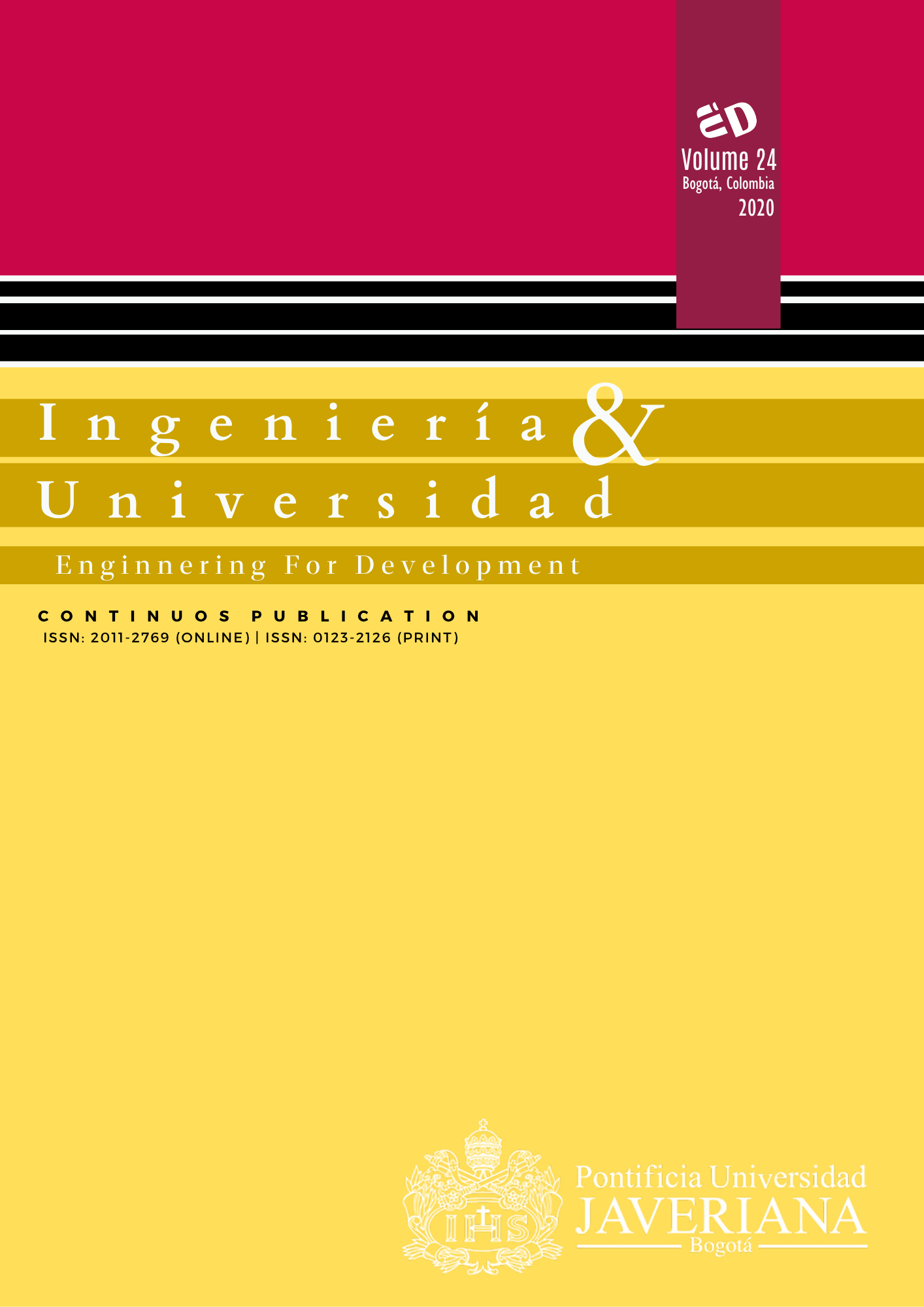Abstract
A prototype developed in ProteinLab UTEM for a tracking system and parametric control for light transport loads that require cold chain fulfillment validation in the interdisciplinary work between engineering and design is presented in this article. The work is performed using fast prototyping development boards, such as Arduino MEGA, a communication shield FONA808, and sensors associated with variables such as temperature and humidity, and the recorded data are sent to the IO.Adafruit.com platform in the cloud. The information is displayed in a dashboard and stored for later export and analysis. The use of these development boards optimizes the incorporation of compatible sensors that allow for a registry of variables that are relevant for future system requirement modifications, such as weight or impact sensors. Finally, the prototype development contemplates the concept of the final product being prepared for testing with end-users as part of the working methodology of ProteinLab UTEM, Center for Technological Innovation, which explores the different methods for comprehensively addressing current technological challenges.
P. Daud, J. A. Simalongo, D. Mahmudin, Y. N. Wijayanto, and P. Putranto, “Design of vehicle tracking system using MCU STM32F103RET6 and SIM908,” Internetworking Indones. J., vol. 9, no. 2, pp. 3–7, 2017.
V. Bosetti and T. Longden, “Light duty vehicle transportation and global climate policy: The importance of electric drive vehicles,” Energy Policy, vol. 58, pp. 209–219, Jul. 2013.
S. Liawatimena and J. Linggarjati, “Vehicle tracker with a GPS and accelerometer sensor system in Jakarta,” Internetworking Indones. J., vol. 9, no. 2, pp. 9–15, 2017.
Ministerio de Salud de Chile, “Decreto 977: aprueba reglamento sanitario de los alimentos.” Chile: Biblioteca del Congreso Nacional de Chile, 2019, p. 183.
Seremi Salud, “Cadena de Frío: Programa Nacional de Inmunizaciones,” Seremi Salud, 2015. [Online]. Available: http://www.cmvm.cl/content/salud/biblioteca/clases2018/Cadena de Frio.pdf. [Accessed: 24-Jun-2018].
T. Godavari and J. Umadevi, “Cloud computing based real-time vehicle tracking and speed monitoring system,” Int. J. Control Theory Appl., vol. 9, no. 4, pp. 1823–1830, 2016.
M. S. Rosdi and N. Ahmad, “Smart handbag system with location tracking,” ARPN J. Eng. Appl. Sci., vol. 11, no. 18, pp. 10840–10844, 2016.
P. Yi, L. Huafu, F. Lu, Z. Zhuxian, H. Feijiang, and C. Chenglin, “A GPS/GSM Based Vehicle Monitoring and Anti-Theft System,” Int. J. Smart Home, vol. 10, no. 7, pp. 115–124, Jul. 2016.
R. Fernández-Garcia and I. Gil, “An alternative wearable tracking system based on a low-power wide-area network,” Sensors, vol. 17, no. 3, p. 592, Mar. 2017.
SIMCOM.EE, “SIM808 Specifications,” GSM / GPRS + GNSS Modules, 2015. [Online]. Available: https://simcom.ee/documents/SIM808/SIM808 SPEC_V1507.pdf. [Accessed: 20-May-2018].
G. Association, “The mobile economy 2019,” 2019.
H. Pranjoto, L. Agustine, and M. Mereditha, “OBD-II-based vehicle management over GPRS wireless network for fleet monitoring and fleet maintenance management,” J. Telecommun. Electron. Comput. Eng., vol. 10, no. 2–3, pp. 15–18, 2018.
M. K. Balga and F. Başçiftçi, “REST API based image processing interactive person tracking application,” in 2nd International Conference on Computer Science and Engineering, UBMK 2017, 2017, pp. 22–27.
N. Velasquez, C. Medina, D. Castro, J. C. Acosta, and D. Mendez, “Design and development of an IoT system prototype for outdoor tracking,” in Proc. of the International Conference on Future Networks and Distributed Systems - ICFNDS ’17, 2017, pp. 1–6.
Z. Rezvani, J. Jansson, and J. Bodin, “Advances in consumer electric vehicle adoption research: A review and research agenda,” Transp. Res. Part D Transp. Environ., vol. 34, pp. 122–136, 2015.
M. Anil Kumar, M. Venkata Suman, Y. Misra, and M. Geetha Pratyusha, “Intelligent vehicle black box using IoT,” Int. J. Eng. Technol., vol. 7, no. 2, pp. 215–218, 2018.
C. C. Chan, “The state of the art of electric and hybrid vehicles,” Proc. IEEE, vol. 90, no. 2, pp. 247–275, 2002.
C. C. Chan, “The state of the art of electric, hybrid, and fuel cell vehicles,” Proc. IEEE, vol. 95, no. 4, pp. 704–718, Apr. 2007.
T. Hutchins, “EIA Conference: Light -duty vehicle energy demand, demographics, and travel behavior,” in EIA Conference, 2014.
L. Fried, “‘Overview | Adafruit FONA 808 Cellular + GPS Shield for Arduino,’” ADAFRUIT.COM, 2015. [Online]. Available: https://learn.adafruit.com/adafruit-fona-808-cellular-plus-gps-shield-for-arduino. [Accessed: 02-Feb-2018].
O. A. Allah, M. Abdalla, S. Abdalla, A. Babiker, and A. A. Allah, “Universal data logger system for environmental monitoring applications,” Indones. J. Electr. Eng. Informatics, vol. 5, no. 2, pp. 131–136, 2017.
R. R. Yeddula and P. Vetrivelan, “Internet of vehicles-based real-time vehicle tracking,” Asian J. Pharm. Clin. Res., vol. 10, pp. 57–60, 2017.
T. Yokotani and Y. Sasaki, “Comparison with HTTP and MQTT on required network resources for IoT,” in 2016 International Conference on Control, Electronics, Renewable Energy and Communications (ICCEREC). https://doi.org/10.1109/ICCEREC.2016.7814989
This journal is registered under a Creative Commons Attribution 4.0 International Public License. Thus, this work may be reproduced, distributed, and publicly shared in digital format, as long as the names of the authors and Pontificia Universidad Javeriana are acknowledged. Others are allowed to quote, adapt, transform, auto-archive, republish, and create based on this material, for any purpose (even commercial ones), provided the authorship is duly acknowledged, a link to the original work is provided, and it is specified if changes have been made. Pontificia Universidad Javeriana does not hold the rights of published works and the authors are solely responsible for the contents of their works; they keep the moral, intellectual, privacy, and publicity rights.
Approving the intervention of the work (review, copy-editing, translation, layout) and the following outreach, are granted through an use license and not through an assignment of rights. This means the journal and Pontificia Universidad Javeriana cannot be held responsible for any ethical malpractice by the authors. As a consequence of the protection granted by the use license, the journal is not required to publish recantations or modify information already published, unless the errata stems from the editorial management process. Publishing contents in this journal does not generate royalties for contributors.



